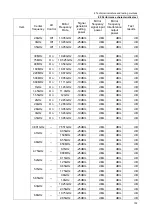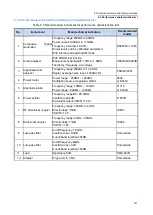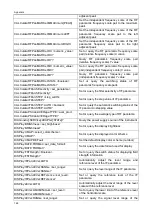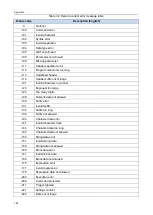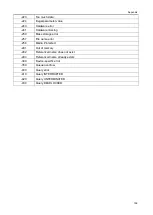
Appendix
144
Resolution
Resolution is used to represent the capability of the monitoring receiver to clearly separate two input
signals. It is subject to the influence of some factors such as IF filter bandwidth, rectangle coefficient,
local-oscillator residual frequency modulation, phase noise and sweep time. Most monitoring receivers
are using LC filters, crystal filters, active filters, digital filters, etc. to achieve different resolution
bandwidths.
Amplitude accuracy
A parameter associated with the amplitude measurement result that characterizes the dispersion of the
amplitude measurement value. Factors affecting amplitude measurement accuracy include frequency
response, display fidelity, input attenuator conversion error, IF gain, scale factor and resolution
bandwidth.
Intermodulation
If two or more signals are simultaneously loaded at the input of an active device (such as an amplifier or
a mixer), multiple sum frequency and/or difference frequency component of each signal itself produces
intermodulation products due to the nonlinearity of the active device and the harmonics of the generated
signal,. For monitoring receiver, these intermodulation products are interference signals, the lower the
level, the better the result. The relationship between the level of the intermodulation product and level of
the input signal is: if the amplitude of the two sinusoidal input signals var
ies by ∆ dB, the corresponding
intermodulation product level will vary by n ∙∆ dB, where n is the order of the intermodulation product,
and represents the sum of the sub-
items of the contained frequencies, such as the frequency 2∙ f
1
+1∙ f
2
,
and the order is 2+1=3. The intersection point when the amplitude of the signal and intermodulation
product is equal is usually called the intercept point. In fact, this point does not exist because the output
of the active device is compressed when the input signal is amplified to a certain extent. The intercept
point can be defined by the input level or output level, so the nominal intercept point has an input and
output intercept point, which refers to the input intercept point unless otherwise specified. The intercept
point is usually expressed in dBm. The larger the intercept point, the better the linearity of the monitoring
receiver, which is a prerequisite for obtaining a large dynamic range. In most cases, among the
intermodulation products, the second-order products and the third-order products have the greatest
impact on the measurement. The 2nd order intercept point is often defined as IP
2
or SOI (Second Order
Intercept), and the 3rd order intercept point is IP
3
or TOI (Third Order Intercept). The calibration of
interception point must specify the value of the input attenuator at the front end of the monitoring receiver
(usually 0dB) as the intercept point will also increase as the attenuation of the attenuator increases.
The linearity of active devices varies with the increase of current and power. In normal case, the current
supplied by the amplifier is proportional to the local oscillator power of the mixer, which will significantly
improve the linearity, so the low power consumption of the monitoring receiver is often equivalent to poor
linearity. However, it should be noted that this is contradictory to the noise requirement. The access
attenuator of the monitoring receiver can control the intermodulation product, which will have a higher
IP
3
value at a higher noise factor, so IP
3
and noise factor should be analyzed and compared in the same
operating mode. IP
3
is an important indicator of the linearity of the monitoring receiver, which reflects the
magnitude of intermodulation distortion when the monitoring receiver is subjected to strong signal
interference.
Detector Mode
The mode in which the analog information is digitized and saved into the memory is mainly used as a
display detection method for the signal energy in the monitoring receiver. Includes "Maximum Peak",
"Power", "Sampling" and "Average".
Drift
The local oscillator frequency is subject to the change in the sweep voltage, resulting in a slow change in
signal position on the display. If drift occurs, it may need to be re-adjusted without compromising the
frequency resolution.
Span
The difference between the start frequency and the stop frequency on the monitoring receiver. The
setting of the bandwidth determines the scale of the horizontal axis of the monitoring receiver display
Содержание 3943B
Страница 2: ...3943B Monitoring Receiver User s Manual Ceyear Technologies Co Ltd...
Страница 4: ......




